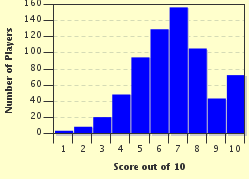Quiz Answer Key and Fun Facts
1. Three percent of all the world's water is?
2. Where is the driest normally populated continent on Earth?
3. Which product requires the most water to create it?
4. The bathroom is one of the main water consumption areas in the home. Assuming everything is working normally, which product would save the most water in this area?
5. The kitchen and laundry are high consumers of water using between 15-20% of total water consumption. What is the most effective way to save water in these rooms?
6. What products and practices can assist pool owners to save water?
7. The garden is an area that can use between 25-40% of the home's total water consumption. What can you do to save water in the garden?
8. In many areas of Australia people have been using a water-saving product for over 100 years. Which product is it?
9. Greywater is used water from showers, baths, hand basins and washing machines that can be used to water the garden. Where should greywater never be used?
10. Leaks are responsible for great amounts of hidden water loss in the home.
Source: Author
Choco_nut
This quiz was reviewed by FunTrivia editor
crisw before going online.
Any errors found in FunTrivia content are routinely corrected through our feedback system.

